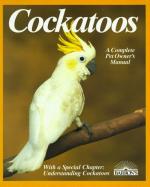|
This section contains 394 words (approx. 2 pages at 300 words per page) |
Acclimation is the process by which an organism adjusts to a change in its environment.It generally refers to the ability of living things to adjust to changes in climate, and usually occurs in a short time of the change.
Scientists distinguish between acclimation and acclimatization because the latter adjustment is made under natural conditions when the organism is subject to the full range of changing environmental factors. Acclimation, however, refers to a change in only one environmental factor under laboratory conditions.
In an acclimation experiment, adult frogs (Rana temporaria) maintained in the laboratory at a temperature of either 50°F (10°C) or 86°F (30°C) were tested in an environment of 32°F (0°C). It was found that the group maintained at the higher temperature was inactive at freezing. The group maintained at 50°F (10°C), however, was active at the lower temperature; it had acclimated to the lower temperature.
Acclimation and acclimatization can have profound effects upon behavior, inducing shifts in preferences and in mode of life. The golden hamster (Mesocricetus auratus) prepares for hibernation when the environmental temperature drops below 59°F (15°C). Temperature preference tests in the laboratory show that the hamsters develop a marked preference for cold environmental temperatures during the pre-hibernation period. Following arousal from a simulated period of hibernation, the situation is reversed, and the hamsters actively prefer the warmer environments.
An acclimated microorganism is any microorganism that is able to adapt to environmental changes such as a change in temperature or a change in the quantity of oxygen or other gases. Many organisms that live in environments with seasonal changes in temperature make physiological adjustments that permit them to continue to function normally, even though their environmental temperature goes through a definite annual temperature cycle.
Acclimatization usually involves a number of interacting physiological processes. For example, in acclimatizing to high altitudes, the first response of human beings is to increase their breathing rate. After about 40 hours, changes have occurred in the oxygen-carrying capacity of the blood, which makes it more efficient in extracting oxygen at high altitudes. As this occurs, the breathing rate returns to normal.
Resources
Books
Ford, M. J. The Changing Climate: Responses of the Natural Fauna and Flora. Boston: G. Allen and Unwin, 1982.
McFarland, D., ed. The Oxford Companion to Animal Behavior. Oxford, England: Oxford University Press, 1981.
Stress Responses in Plants: Adaptation and Acclimation Mechanisms. New York: Wiley-Liss, 1990.
|
This section contains 394 words (approx. 2 pages at 300 words per page) |


